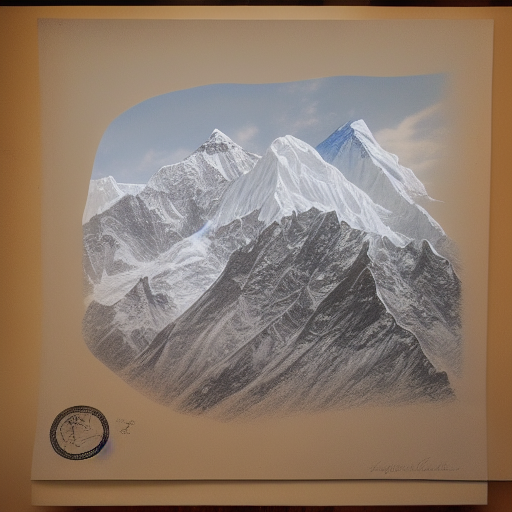Mount Everest is the highest mountain on earth, residing in the Mahalangur Himal sub-range of the Himalayas. The summit point of the mountain is located near the Nepal-China border. Its elevation was most recently established in 2020. Everest is a challenging climb, but it’s well worth the effort.
Tengboche Monastery
If you’ve ever been to the Everest region, you’ve probably heard of Tengboche Monastery. This monastery is located in Tengboche, the last stop before reaching the high peaks. The monastery is also home to many yaks.
Surrounded by a forested landscape and the peaks of Everest, the Tengboche Monastery is an enchanting place to visit. It’s located at 3,867 meters above sea level, and the views from the monastery are breathtaking. There are several trails that lead to the monasteries.
The best time to visit Tengboche is between October and December. During these months, the weather is pleasant. However, if you’re planning to visit during the high season, you should visit Tengboche in April, May, or June. This will ensure that you have the best possible view of the peaks.
Tengboche is one of the most visited destinations in the Everest region. This famous Buddhist monastery has recently received international media attention. It is a convenient stopoff point midway to the Everest Base Camp trek and offers a unique look into the lifestyle of the mountain people. While you’re there, don’t miss the chance to view the Mani Rimdu ceremony, held during the autumn months, and immerse yourself in the culture of the Sherpa people.
Tengboche monastery is located near the base of Everest. The monastery is an important religious center for the Sherpa community. The temple is home to around 35 monks.
Kala Patthar
Kala Patthar is a must-visit place for trekking enthusiasts, as it is a beautiful location with a breathtaking view of the mountain. The trek starts from Gorak Shep and proceeds straight behind the village to the black rock formation known as Kala Patthar. Once you reach the summit, you’ll see prayer flags and a view point from the summit.
The trek to Kala Patthar is not particularly long, but it is at high altitude and requires a large amount of physical effort. It usually takes a standard trekker about 1.5 to two hours to reach the view point. Moreover, the climb requires a lot of patience and rest. It’s best to avoid alcohol and use preventative medication such as Diamox, which will reduce the risk of altitude sickness.
The ideal season to trek to Kala Patthar is from March to May and from September to November. The temperatures are pleasant with clear skies and little or no precipitation. Whichever time you plan to trek to Kala Patthar, be sure to bring a good sunscreen and sunglasses. The high UV rays can cause sunburn and can be dangerous if you are not protected.
Kala Patthar is an ideal place for trekkers to enjoy the spectacular view of the Everest summit. The surrounding area is also rich in natural beauty. The name Kala Patthar doesn’t come from the local Sherpa language, but it’s derived from Hindi. It literally means “Black Rock.”
Many base camp trekkers choose to hike to Kala Patthar as an add-on to their trek. It is also a popular place to meet fellow mountaineers. The trek to Kala Patthar is included in several different itineraries, such as the Classic Everest Base Camp, Jiri to Everest Base Camp, and the Three Passes and Island Peak Treks.
Pikey Peak
For the most beautiful views of Everest, you should head to Pikey Peak, a high point in the Solukhumbhu district. It’s a gradual hike that’s decorated with prayer flags and offers great views of the surrounding peaks and valleys. It’s also an ideal location for sunrise treks. The trek starts on a flat trail and gradually becomes steeper as you enter the forest, offering beautiful views. From Pikey Peak, you can continue hiking to Loding and Jase Bhanjyang. Although there are steep sections in the trail, it is an easy trek and offers charming accommodation.
Pikey Peak Trekking is possible almost all year round, with the exception of monsoon, which is the rainiest season. In monsoon, dark, heavy clouds can block the views and disturb your walk. In the spring, Pikey Peak is covered in wildflowers and rhododendron trees. Mornings are typically clear, with only the occasional light rain, although snow is sometimes a possibility in the early Spring.
The hike to Pikey Peak is less popular than other treks in the Everest region, but has gained in popularity in recent years. Whether you’re an experienced trekker or someone new to the mountain, the Pikey Peak trek will provide you with stunning views of the rugged Everest region and Mount Everest.
After trekking to Pikey Peak, you’ll have the opportunity to enjoy the sunrise from the summit. As the sun rises, the peaks of Kangchenjunga and Pikey Peak will light up the valley below. If you have time and physical fitness, you can complete the Pikey Peak trek in four days. Then, take the road back to Phaplu, which is the closest airport to Kathmandu. You can also take a circuit flight from Phaplu via Dhap and Lamjura.
Tengboche to Lobuche
The trekking route from Tengboche to Lobuche in the Everest region offers stunning views of the region and the imposing Lobuche Peak. This mountain is one of the most difficult peaks to climb in the Everest region. The climb usually begins from the southeast ridge. Climbers will see beautiful scenery, lush vegetation, and Sherpa villages. They will also see prayer flags and monasteries.
A journey from Tengboche to Lobuche in the Everest region is a rewarding experience. This route is challenging, but approachable, enabling climbers to enjoy the sweeping views of Ama Dablam and Cholatse. Climbers will need fixed lines to summit the ridge, but the view is well worth it.
The route from Tengboche to Lobuche takes approximately five hours and has a slight increase in altitude. This trek is a popular choice for those who want to experience the best scenery. There are beautiful snow peaks and glaciers on this route. The Khumbu Glacier and Khumbu Icefall are impressive. There is also a river in this section.
From Tengboche, the route to Lobuche is the most popular trek in the Everest region. Thousands of climbers obtain permission for this route every year. This climb offers one of the best views of the Everest mountain. It is also close to Pheriche village and the famous monastery. Once there, you can continue on your trek to the base camp.
The journey from Tengboche to Lobuche is not particularly difficult and is suitable for people of all fitness levels. The trek takes about two hours and includes scenic views of the Mount Everest.










